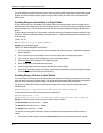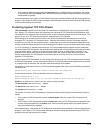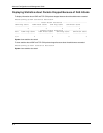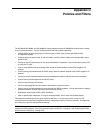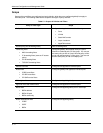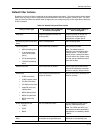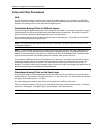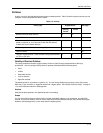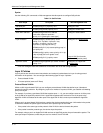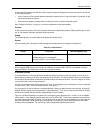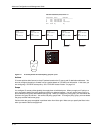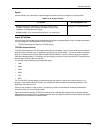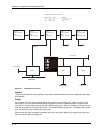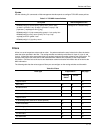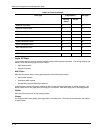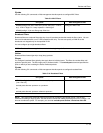
Advanced Configuration and Management Guide
Syntax
Use the following CLI commands or Web management interface panels to configure QoS policies.
Table C.4: QoS Policies
QoS Scope CLI syntax Web management links
Individual port HP9300(config-if-1/1)# priority <0-7> Configure->Port
VLAN HP9300(config-vlan-8)# priority <0-7> Configure->VLAN->Port
Static MAC address
a
HP9300(config)# static-mac-address
<mac-addr> ethernet <portnum>
[priority <0-7>] [host-type | router-type]
Configure->Static Station
Layer 4 session HP9300(config)# ip access-policy <num>
priority <0-7> <ip-addr> <ip-mask> | any
<ip-addr> <ip-mask> | any tcp | udp
[<operator> [<tcp/udp-port-num>]]
HP9300(config-if-1/1)# ip access-policy-group in |
out <policy-list>
HP9300(config) ip policy <num> priority <0-7> tcp
| udp <tcp/udp-port-num> global | local
HP9300(config-if-1/1) ip-policy <num>
Configure->IP->Access Policy
Layer 4 QoS (link from the
System configuration panel)
AppleTalk socket HP9300(config)# appletalk qos socket <number>
priority <0-7>
Configure->IP->AppleTalk
->Socket QoS
a.You can configure static MAC addresses on the switch but not on the routing switches.
Layer 3 Policies
Layer 3 policies are rules that control transmission and receipt of packets based on Layer 3 routing protocol
information in the packets. You can configure the following types of Layer 3 policies:
• Protocol-based VLANs
• IP access policies (same as IP filters)
Protocol-Based VLANs
Within an 802.1d port-based VLAN, you can configure protocol-based VLANs that define Layer 3 broadcast
domains for specific protocols. By configuring a port as a member of a protocol VLAN, you establish a forwarding
policy for that port.
For example, if you have a port-based VLAN that contains ports 1 – 12, you can configure some or all of the ports
in the VLAN as an AppleTalk protocol VLAN. AppleTalk broadcast traffic received on one of the ports in the
AppleTalk VLAN is broadcast to the other ports in the AppleTalk VLAN, but not to ports outside the AppleTalk
VLAN.
When a port in protocol-based VLAN receives a packet, the device examines the Layer 3 information in the packet
to determine whether the packet type is the same as the protocol type of the VLAN.
• If the packet is the same type as the protocol of the VLAN, the device forwards the packet.
• If the packet is another protocol type, the device drops the packet.
For example, when a port in an AppleTalk VLAN receives an AppleTalk packet, the port forwards the packet. The
same port drops IPX packets, unless the port also is a member of an IPX VLAN.
C - 6



